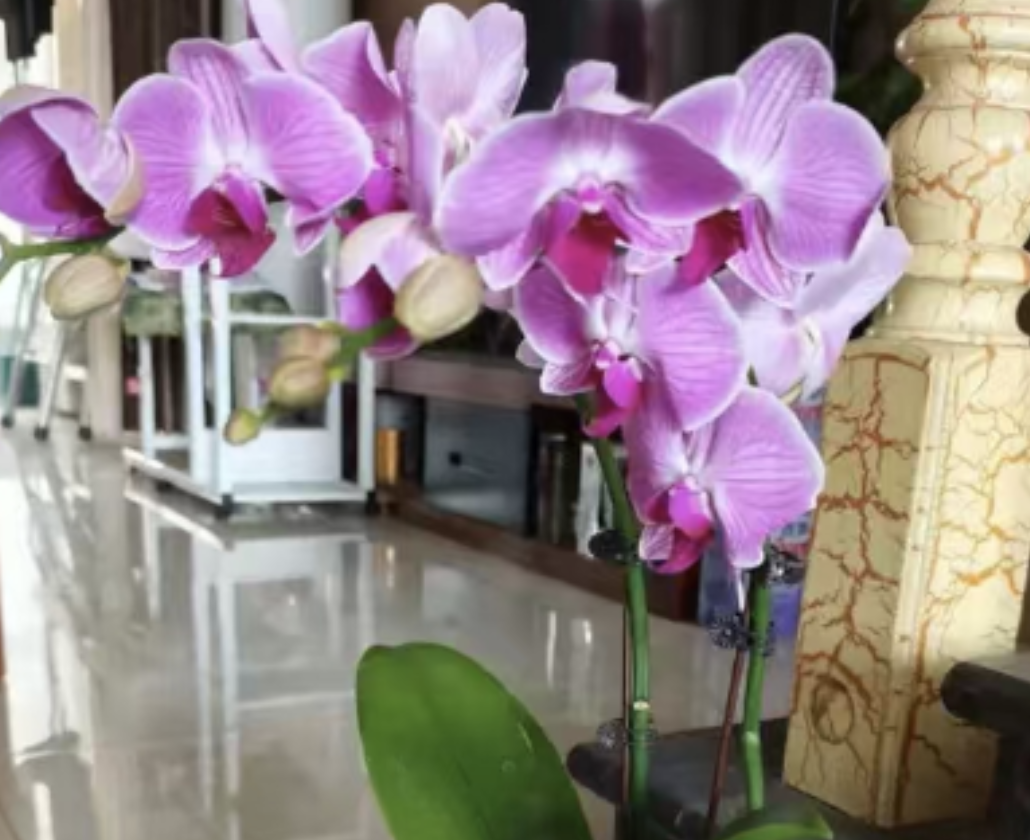Ottelia acuminata, a unique aquatic plant, has many fascinating characteristics.
It is called "fickle as water and willowy as the flower" because it mostly grows in water environments such as lakes, ponds, ditches and paddy fields in warm regions. Its flowers bloom on the water surface. The white petals cluster around the yellow stamens, with an elegant flower shape, shining brightly in the sunlight, just like flowers blooming on the sea.
The blooming season of Ottelia acuminata is generally between May and October. Its flowers have the unique habit of opening when the sun rises and closing when the sun sets. Every morning when the first rays of the sun appear, the petals slowly open, and as night falls, they close quietly. Although the blooming time of each flower is short, only two to three days, thanks to the continuous blooming of the flowers, the whole flowering period presents a continuous and flower-bedecked scene that lasts for several months, adding a vivid charm to the water area.
If you want to cultivate Ottelia acuminata, you need to master its unique cultivation techniques. It is extremely picky about water quality conditions. It prefers clear, slowly flowing water sources rich in minerals, and the water quality needs to be maintained within the range of neutral to slightly alkaline to create an ideal growth environment for it. In terms of light, Ottelia acuminata needs to absorb sufficient sunlight for photosynthesis, and at least six hours of light time should be ensured every day. However, in the sweltering heat of summer, it needs to be properly shaded to prevent the water temperature from getting too high due to the scorching sun, which would then affect the healthy growth of the plants. The suitable temperature range for the water is 15 °C to 28 °C. Too high or too low water temperatures will hinder its normal growth. As for the soil substrate, it takes root in the silt or sandy soil at the bottom of the water. Such soil should be rich in organic matter and have good ventilation and water retention properties. When cultivating artificially, river mud, lake mud, etc. can be selected as the substrate.
However, there are also many precautions to be taken during the process of planting Ottelia acuminata. When fertilizing, you should be extremely cautious. Organic fertilizers or special fertilizers for aquatic plants should be selected, and the amount and frequency of fertilization should be strictly controlled to avoid pollution of the water body caused by chemical fertilizer residues. In terms of pest and disease control, biological control methods should be given priority, such as introducing natural enemies of pests. If chemical pesticides need to be used, it is necessary to choose products with low toxicity, high efficiency and little impact on the aquatic environment, and operate strictly in accordance with the regulations to prevent pesticide residues from causing adverse consequences to Ottelia acuminata and the entire aquatic ecosystem.
In short, Ottelia acuminata is not only a pleasing ornamental plant, but also an indispensable part of the aquatic ecosystem.
Why is Ottelia acuminata called "fickle as water and willowy as the flower"?

Share with
Tagged in :




Leave a Reply